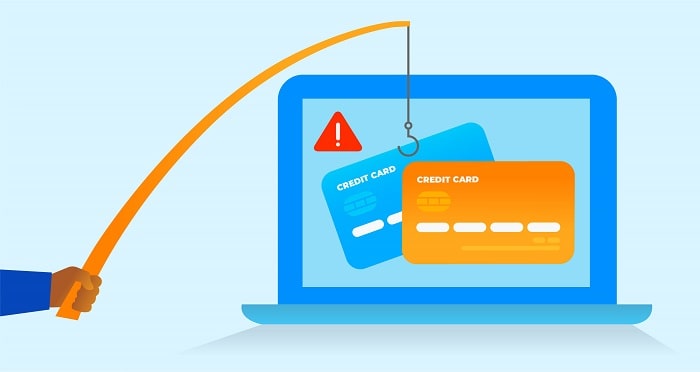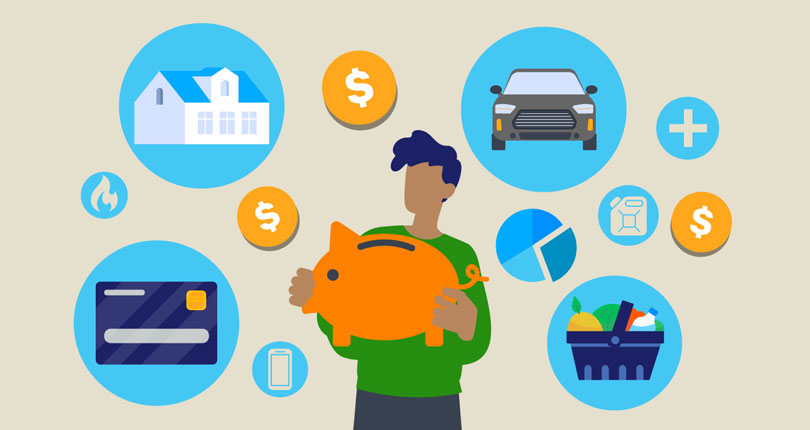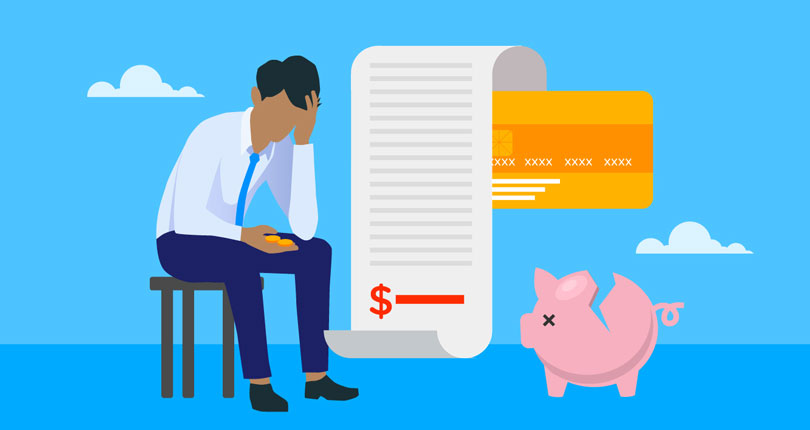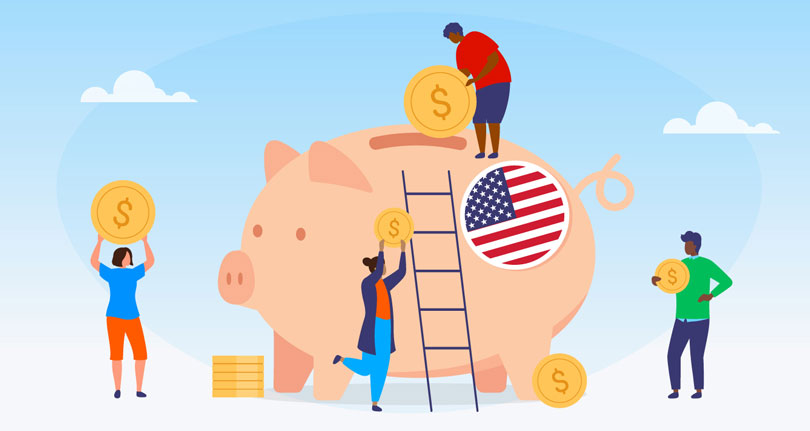
If you’ve ever opened up your credit card statement and have seen charges you don’t remember making, you’ve felt a feeling many Americans know and you’re not alone. Credit card fraud is a form of identity theft involving criminal deception for the purpose of personal financial gain.
There were 1,036,903 reported cases of identity theft in the U.S. in 2023. Of those, 40%, or 416,582, were credit card fraud. [1] FTC CSN Data Book 2023 https://www.ftc.gov/system/files/ftc_gov/pdf/CSN-Annual-Data-Book-2023.pdf
Key Statistics
- Americans reported 416,582 cases of credit card fraud in 2023. This is a decrease of 5.4% compared to 2022, when there were 440,692 cases of credit card fraud reported.
- Losses from fraud involving cards used for payment worldwide reached $34 billion in 2022. They are projected to rise to $43 billion by 2026.
- Because of recent large, high-profile security breaches at retailers, offline purchases appear to have become more insecure. 2019 alone saw more than 100,000,000 online customer accounts compromised by data breaches.
- Social media is the most targeted industry for phishing attacks as of Q3 2023 with 43% of recorded attacks.
- For every $1 lost to fraud, merchants in the U.S. and Canada lose $3 due to the additional cost of replacing merchandise, chargebacks, and other fees.
- The median loss for all fraud reports in 2023 was $500, with the highest median individual losses being investment-related ($7,768).
- The U.S. holds the highest share of global credit card fraud with 35% of total losses, with this predicted to reach $12.5 billion in 2024.
- In 2023, credit card fraud on new accounts made up 45.7% of the top 5 types of identity theft.
Top 10 fraud categories in 2023
| Rank | Category | Number of Reports | % Reporting $ Loss | Total $ Loss |
|---|---|---|---|---|
| Rank 1 | Category Imposter Scams | Number of Reports 853,935 | % Reporting $ Loss 21% | Total $ Loss $2,668,000,000 |
| Rank 2 | Category Online Shopping and Negative Reviews | Number of Reports 368,379 | % Reporting $ Loss 53% | Total $ Loss $392,000,000 |
| Rank 3 | Category Prizes, Sweepstakes and Lotteries | Number of Reports 157,520 | % Reporting $ Loss 13% | Total $ Loss $338,000,000 |
| Rank 4 | Category Investment Related | Number of Reports 107,699 | % Reporting $ Loss 75% | Total $ Loss $4,642,000,000 |
| Rank 5 | Category Business and Job Opportunities | Number of Reports 107,134 | % Reporting $ Loss 32% | Total $ Loss $491,000,000 |
| Rank 6 | Category Internet Services | Number of Reports 98,717 | % Reporting $ Loss 7% | Total $ Loss $36,000,000 |
| Rank 7 | Category Telephone and Mobile Services | Number of Reports 94,261 | % Reporting $ Loss 11% | Total $ Loss $19,000,000 |
| Rank 8 | Category Health Care | Number of Reports 71,518 | % Reporting $ Loss 7% | Total $ Loss £17,000,000 |
| Rank 9 | Category Travel, Vacations and Timeshare Plans | Number of Reports 55,063 | % Reporting $ Loss 22% | Total $ Loss $122,000,000 |
| Rank 10 | Category Foreign Money Offers and Fake Check Scams | Number of Reports 32,164 | % Reporting $ Loss 34% | Total $ Loss $138,000,000 |
Imposter scams, where criminals pretend to be employees of the IRS or other agencies, and con or threaten people into revealing sensitive details, including banking and credit card information, were the most common fraud type in the general fraud category in 2023 with 853,935 reports. [1] FTC CSN Data Book 2023 https://www.ftc.gov/system/files/ftc_gov/pdf/CSN-Annual-Data-Book-2023.pdf

How to Build Credit When You Have None
Building credit from scratch can be a lot easier when you understand where to start and which mistakes to avoid.
Download our guideHow credit card fraud impacts individuals
Being a victim of credit card fraud, or any form of identity theft, can take a toll on a person. But fortunately, the financial toll it takes is usually limited. The Fair Credit Billing Act ensures that an individual will never be liable for more than $50 in unauthorized charges on your credit card due to fraud. And, if you report a lost or stolen card immediately to your issuer, you won’t be liable for any fraudulent charges. [2] U.S. Code Fair Credit Billing Act - ConsumerFinance.gov https://www.consumerfinance.gov/rules-policy/regulations/1026/12/#a-2
This can have a negative impact on the victim’s credit score, which can have many indirect costs associated with it. Victims often find it difficult to secure a loan. They may be forced to pay a higher interest rate if they can secure a loan. It can also take months to get their credit score corrected. Fighting incorrect credit information as the result of fraud can also cost a victim lost time from work.
Identity theft reports by age
Credit card fraud is a form of identity theft. While identity theft as a whole has decreased by 5.5% from 2022 to 2023, those aged 80 and over have seen the biggest increase with an 8.6% increase in reports in 2023 compared to 2022.
People aged 30-39 reported the most identity thefts in 2023, with 272,971, but this was a decrease of 8.1% compared to 2022. The 40-49 age group had the next highest number of identity theft reports, but this had also decreased since 2022, by 7.1%.
In 2023, reports of identity thefts reduced in all age groups under 60 compared to 2022. However, those in age groups over 60 all reported more identity thefts in 2023, with the over 80 age group seeing the largest increase (8.6%).
| Age | Identity theft reports in 2022 | Identity theft reports in 2023 | Change |
|---|---|---|---|
| 19 and under | 23,953 | 22,229 | -7.2% |
| 20 to 29 | 180,146 | 168,731 | -6.3% |
| 30 to 39 | 296,890 | 272,971 | -8.1% |
| 40 to 49 | 212,729 | 197,692 | -7.1% |
| 50 to 59 | 139,835 | 135,813 | -2.9% |
| 60 to 69 | 77,784 | 78,973 | 1.5% |
| 70 to 79 | 31,378 | 32,005 | 2.0% |
| 80 and over | 8,199 | 8,901 | 8.6% |
| Total | 970,914 | 917,315 | -5.5% |
Sources [1] FTC CSN Data Book 2023 https://www.ftc.gov/system/files/ftc_gov/pdf/CSN-Annual-Data-Book-2023.pdf [3] FTC - CNS Data Book 2022 https://www.ftc.gov/system/files/ftc_gov/pdf/CSN-Data-Book-2022.pdf
Credit card fraud was the most reported type of identity theft in 2023, making up 40% of all identity theft reports. [1] FTC CSN Data Book 2023 https://www.ftc.gov/system/files/ftc_gov/pdf/CSN-Annual-Data-Book-2023.pdf
Top five types of identity theft, 2023
Credit card fraud on new accounts was the most common identity theft subtype in 2023, with 381,122 reports, and making up 45.7% of the top 5 most common types of identity theft. This was followed by miscellaneous identity theft with 205,505 reports in 2023.
| Number of reports in 2023 | % of top 5 | |
|---|---|---|
| Credit card fraud - new accounts | 381,122 | 45.7% |
| Miscellaneous identity theft | 205,505 | 24.6% |
| Bank accounts - new accounts | 84,335 | 10.1% |
| Government benefits applied for/received | 82,419 | 9.9% |
| Business or personal loan | 81,342 | 9.7% |
| Total | 834,723 |
Source [1] FTC CSN Data Book 2023 https://www.ftc.gov/system/files/ftc_gov/pdf/CSN-Annual-Data-Book-2023.pdf
How credit card fraud impacts businesses
How credit card fraud impacts a business depends on the type of business affected, and the type of fraud that occurs.
In card-present fraud, the card issuer bears the loss. In card-not-present fraud, the merchant bears the loss. The loss from this type of credit card fraud can have a significant impact on retail businesses which often have small profit margins.
A statistic that is often overlooked is the cost-per-dollar-of-fraud to a business. For example, for every $1 in value of fraud, businesses can lose an average of $3 because of the cost of things like chargebacks, fees, and replacement of the merchandise lost. [4] Enterprise Times - Report Says Businesses Face $3 Total Cost for Each Dollar Lost to Fraud https://www.enterprisetimes.co.uk/2024/04/03/report-says-businesses-face-3-total-cost-for-each-dollar-lost-to-fraud
Repeated chargebacks could cause increased risk of a business’ merchant account being terminated due to a high chargeback rate. Inability to accept credit cards as payment can damage a business’ reputation and hurt consumer confidence in that business.
Global losses to credit card fraud
The latest figures, from 2022, show that global credit card fraud losses totaled $34 billion, having increased by 46% year-over-year. This is expected to reach $43 billion by 2026.
The number of credit card fraud attacks on online sellers increased by 140% between 2019 and 2022, indicating that e-commerce merchants have become a common target for fraudsters. Almost half of these attacks (46%) originate from the U.S. [5] Clearly Payments - Credit Card Fraud in 2023 https://www.clearlypayments.com/blog/credit-card-fraud-in-2023/
Credit card fraud losses in the U.S.
The U.S. suffers the highest share of global credit card fraud with 36% of the total losses, with this figure predicted to exceed $12.5 billion in total in 2024. [5] Clearly Payments - Credit Card Fraud in 2023 https://www.clearlypayments.com/blog/credit-card-fraud-in-2023/
Types of Credit Card Fraud
Phishing
Reported number of phishing attacks according to a report by security company Egress [6] Trend Micro - Worldwide 2022 Email Phishing Attacks https://www.trendmicro.com/en_za/ciso/23/e/worldwide-email-phishing-stats-examples-2023.html
| Year | Number of Attempts |
|---|---|
| 2021 | 16,452,129 |
| 2022 | 21,267,356 |
Phishing is a method of sending emails claiming to be from reputable businesses in an attempt to get sensitive data, such as personal info like credit card numbers or passwords. It’s a type of social engineering that uses deception to get someone to do what they wouldn’t normally do.
Phishers don’t always go after credit card information directly. But, of all of the platforms and environments phishers operate in, more than half involves either the retail or financial sectors where there are large storehouses of credit card data.
| Industry | Percent |
|---|---|
| Social media | 43% |
| SAAS/Webmail | 15% |
| Financial institution | 14% |
| E-commerce/retail | 6% |
| Logistics/shipping | 5% |
| Payment | 4% |
| Telecoms | 3% |
| Cryptocurrency | 1% |
| Other | 9% |
Source [7] Techopedia - Phishing Attacks Statistics and Facts for 2024 https://www.techopedia.com/phishing-statistics
Not only are phishing attacks on the rise (29.3% between 2021 and 2022), but they are becoming more sophisticated. Initially, phishing attacks were fairly easy to spot because of the insecure nature of the sites people were redirected to. These sites initially did not have the security that a normal retail or credit card processing site would have and would make the savvy consumer wary.
However, the number of phishing sites now employing encryption (signified by the https://..) is rising. This means more and more illegitimate sites look legitimate at first glance.
Fraudulent Credit Card Applications
One of the most insidious types of credit card fraud is when a criminal obtains enough information about someone to obtain a fraudulent credit card in that person’s name.
In 2023, the Federal Trade Commission reported 416,582 consumers who experienced credit card fraud involving their information being misused on an existing credit card, or accounts opened in their name without their permission. [1] FTC CSN Data Book 2023 https://www.ftc.gov/system/files/ftc_gov/pdf/CSN-Annual-Data-Book-2023.pdf Known as the “Imposter Scam,” the FTC reported that this form of fraud jumped from 726,000 reported cases in 2022 to 853,935 reported cases in 2023. Consumer losses to this type of scam in 2023 totalled $2.7 billion.
Card-not-present (CNP) fraud
The scary reality of card-not-present fraud is that it’s not only increasing, in 2022 it was projected to reach $10.16 billion in 2024, compared to $5.04 billion in 2019.
Amount of card-not-present fraud by year
| Year | Amount |
|---|---|
| 2019 | $5.04 billion |
| 2020 | $6.61 billion |
| 2021 | $7.87 billion |
| 2022 | $8.75 billion |
| 2023 (predicted) | $9.49 billion |
| 2024 (predicted) | $10.16 billion |
Source [8] Emarketer - Card-not-present fraud to make up 73% of credit card payment fraud https://www.emarketer.com/content/card-not-present-fraud-payment
CNP fraud involves the consumer not presenting a physical card to a merchant at the point of sale. As consumers, we're most familiar with this type of transaction every time we buy from Amazon. We enter our credit card information on an online form and a few clicks later, we receive a message that our purchase is on its way to us.
CNP fraud is unique because its increase has largely been driven by the decrease in card-present fraud. Card-present fraud, while still a serious problem, has been on the decline because of EMV technology. The magnetic strip on traditional credit cards has static data. It remains unchanged with every transaction, and is therefore easy to duplicate. Every time a card containing an EMV chip is scanned, it creates a unique transaction code that can not be used again making it much more secure for in-person transactions.
Criminals discovered it is much easier to obtain a 16-digit credit card number, expiration date, and CVV code for a credit card than to try in vain to duplicate EMV technology. [9] Investopedia - Card Not Present Fraud https://www.investopedia.com/terms/c/cardnotpresent-fraud.asp With EMV not used for online transactions, that’s where they shifted their efforts.
Credit card fraud in recent years
The number of reports of credit card fraud has risen steadily since 2019 when there were 271,706 reports, dropping only slightly in 2021. In 2023, there were 416,580 reports of credit card fraud, a 53.3% increase compared to 2019.
| Year | Credit card fraud reports |
|---|---|
| 2019 | 271,706 |
| 2020 | 393,442 |
| 2021 | 389,790 |
| 2022 | 440,694 |
| 2023 | 416,580 |
Source [10] Tableau - Identity Theft Reports https://public.tableau.com/app/profile/federal.trade.commission/viz/IdentityTheftReports/TheftTypesOverTime
Sources
- [1] FTC CSN Data Book 2023 https://www.ftc.gov/system/files/ftc_gov/pdf/CSN-Annual-Data-Book-2023.pdf
- [2] U.S. Code Fair Credit Billing Act - ConsumerFinance.gov https://www.consumerfinance.gov/rules-policy/regulations/1026/12/#a-2
- [3] FTC - CNS Data Book 2022 https://www.ftc.gov/system/files/ftc_gov/pdf/CSN-Data-Book-2022.pdf
- [4] Enterprise Times - Report Says Businesses Face $3 Total Cost for Each Dollar Lost to Fraud https://www.enterprisetimes.co.uk/2024/04/03/report-says-businesses-face-3-total-cost-for-each-dollar-lost-to-fraud
- [5] Clearly Payments - Credit Card Fraud in 2023 https://www.clearlypayments.com/blog/credit-card-fraud-in-2023/
- [6] Trend Micro - Worldwide 2022 Email Phishing Attacks https://www.trendmicro.com/en_za/ciso/23/e/worldwide-email-phishing-stats-examples-2023.html
- [7] Techopedia - Phishing Attacks Statistics and Facts for 2024 https://www.techopedia.com/phishing-statistics
- [8] Emarketer - Card-not-present fraud to make up 73% of credit card payment fraud https://www.emarketer.com/content/card-not-present-fraud-payment
- [9] Investopedia - Card Not Present Fraud https://www.investopedia.com/terms/c/cardnotpresent-fraud.asp
- [10] Tableau - Identity Theft Reports https://public.tableau.com/app/profile/federal.trade.commission/viz/IdentityTheftReports/TheftTypesOverTime






